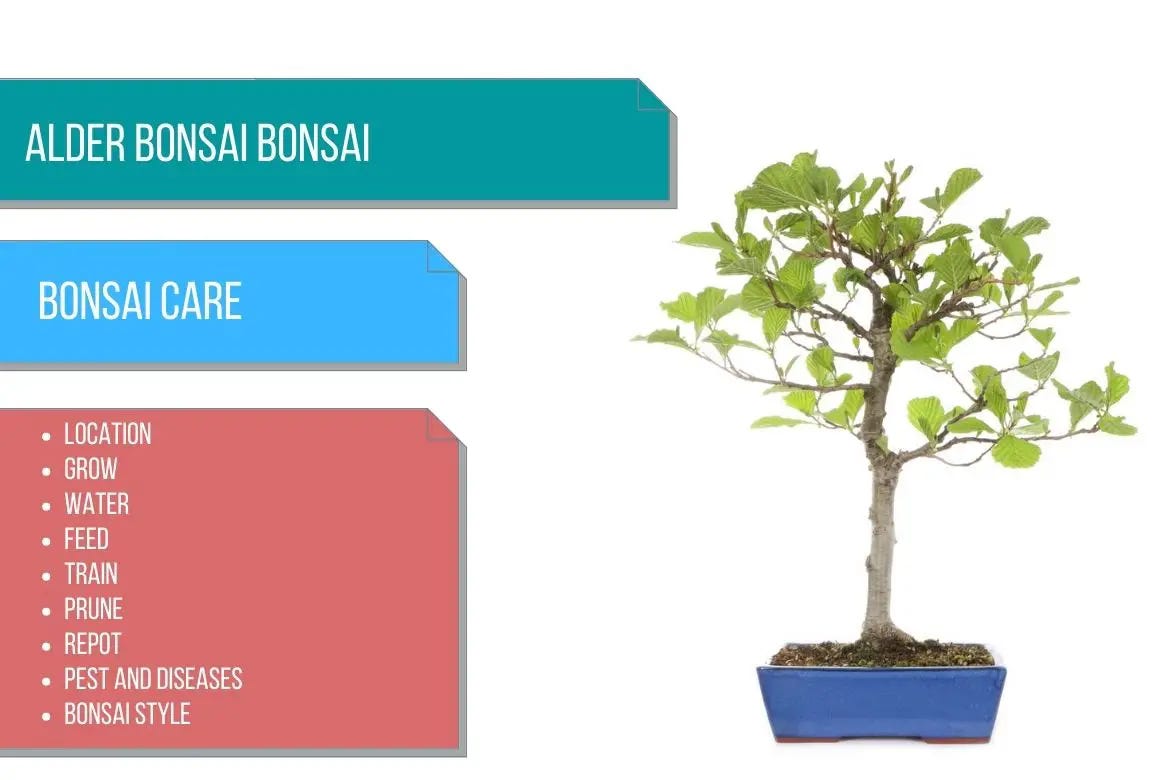Alder bonsai trees require consistent watering and partial sunlight. Pruning is essential to maintain their shape and health.
Alder bonsai trees are popular for their resilience and adaptability. Originating from the Northern Hemisphere, these trees thrive in various climates, making them suitable for bonsai cultivation. Consistent watering ensures the soil remains moist but not waterlogged. Partial sunlight helps the alder bonsai grow healthily without scorching its leaves.
Regular pruning is necessary to maintain its compact size and desired shape. Using well-draining soil and proper fertilization supports robust growth. Monitoring for pests and diseases keeps the tree healthy. With proper care, an alder bonsai can become a stunning centerpiece in any bonsai collection.
Introduction To Alder Bonsai
Alder Bonsai is a small tree. It is grown in a pot. These trees are from the Alder family. They have small leaves and a strong trunk. People love them for their beauty.
The Alder tree comes from the Northern Hemisphere. They grow near rivers and lakes. These trees are important in many cultures. They symbolize strength and endurance. Alder Bonsai is a miniature version of these trees. It is popular among bonsai lovers.
Choosing The Right Alder Species
Selecting the ideal alder species ensures optimal growth for your bonsai tree. Different species offer varied aesthetics and care requirements. Proper choice enhances bonsai beauty and health.
Planting And Potting
Alder bonsai trees need well-draining soil. Use a mix of organic matter and sand. This helps the roots get enough air. Avoid heavy clay soils. They retain too much water. This can cause root rot. A balanced soil mix is key for healthy growth.
Choose a pot with drainage holes. This prevents water from staying in the pot. Gently remove the tree from its old pot. Trim the roots to fit the new pot. Place the tree in the center of the new pot. Fill in with the chosen soil. Press the soil firmly around the roots. Water the tree well after potting.

Credit: medium.com
Watering And Humidity
Alder bonsai trees need regular watering. Water the tree daily in warm seasons. During winter, check the soil before watering. The soil should be moist but not soggy. Overwatering can harm the roots. Use a watering can with a fine spout. This helps to avoid soil disturbance.
Alder bonsai trees thrive in humid environments. Place a humidity tray under the pot. Fill the tray with pebbles and water. Ensure the pot sits on the pebbles, not in water. Mist the leaves daily to maintain moisture. Keep the tree away from drafts and dry air. A humidifier can also help maintain the right humidity levels.
Pruning And Shaping
Pruning helps shape the Alder Bonsai tree. Use sharp scissors to cut branches. Cut just above a leaf node. This helps new growth. Remove dead or damaged branches first. This keeps the tree healthy. Thin out crowded areas. This allows light to reach all parts. Pinch back new shoots to control growth. This helps maintain the desired shape.
Wire training shapes the tree’s branches. Use aluminum or copper wire. Start with the thickest wire first. Wrap the wire around the branch. Do this gently. Bend the branch to the desired shape. Check the wire regularly. Remove it if it cuts into the bark. This prevents damage to the tree. Reapply wire as needed. This keeps the tree in shape.
Fertilizing Your Alder Bonsai
Alder bonsai trees need specific fertilizers. Use a balanced fertilizer with equal parts of nitrogen, phosphorus, and potassium. Organic fertilizers are best. They provide slow-release nutrients. Avoid fertilizers with high nitrogen content. These can harm the tree.
Apply fertilizer every two weeks during the growing season. Reduce frequency in winter. Always water the bonsai before fertilizing. This prevents root burn. Use liquid fertilizers for even distribution. Granular fertilizers can also be used. Apply them on the soil surface. Then water the tree to help absorption.
Pest And Disease Management
Common pests include aphids, spider mites, and scale insects. Aphids are small, soft-bodied insects that suck sap. Spider mites are tiny and can cause yellowing leaves. Scale insects attach themselves to the tree and feed on sap. Regularly inspect your bonsai tree for these pests. Use a soft brush or a stream of water to remove them. In severe cases, neem oil or insecticidal soap can be effective.
Keep your alder bonsai healthy to prevent diseases. Ensure proper air circulation around the tree. Avoid overwatering, which can lead to root rot. Use well-draining soil to prevent waterlogged roots. Regularly prune dead or diseased branches. This helps to maintain the tree’s health. Clean your tools before and after pruning to avoid spreading diseases.

Credit: www.reddit.com
Seasonal Care And Maintenance
Alder bonsai trees need extra water in spring and summer. Water daily to keep the soil moist. Prune new growth to shape the tree. Fertilize the tree every two weeks. Use a balanced liquid fertilizer. Check for pests regularly. Remove any insects you find.
In fall, reduce watering to once every few days. Stop fertilizing the tree in fall. Move the tree indoors if the temperature drops below 50°F. Place it in a cool room with sunlight. Reduce pruning during these seasons. Let the tree rest and regain strength.

Credit: m.youtube.com
Conclusion
Caring for an Alder Bonsai tree is rewarding and fulfilling. Follow the tips provided for optimal growth. Regular watering, proper pruning, and suitable soil ensure a healthy tree. Remember, patience and consistency are key. With time and effort, your Alder Bonsai will thrive beautifully.
Enjoy the journey of bonsai cultivation!

